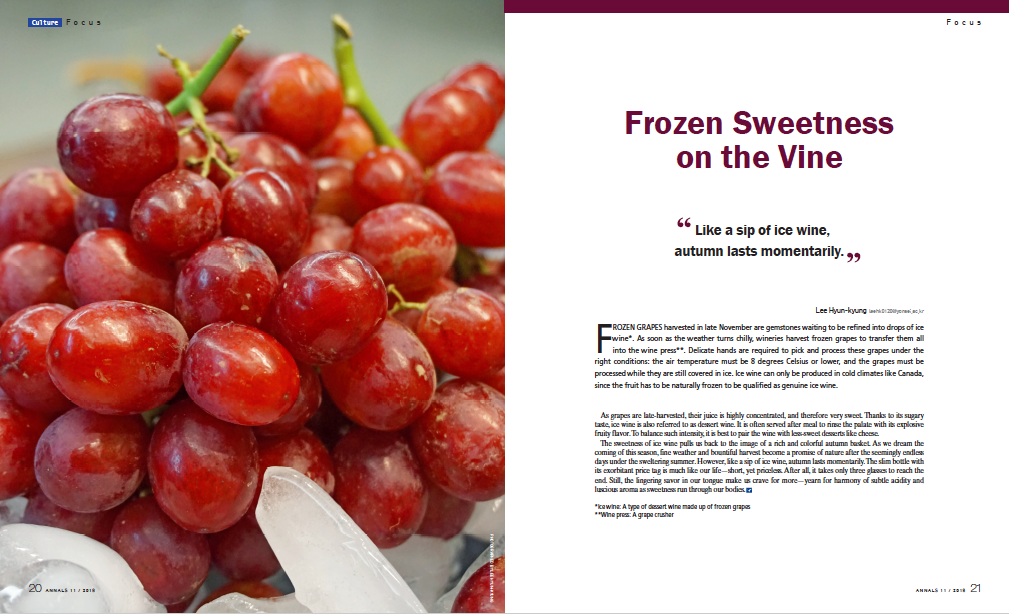
FROZEN GRAPES harvested in late November are gemstones waiting to be refined into drops of ice wine*. As soon as the weather turns chilly, wineries harvest frozen grapes to transfer them all into the wine press**. Delicate hands are required to pick and process these grapes under the right conditions: the air temperature must be 8 degrees Celsius or lower, and the grapes must be processed while they are still covered in ice. Ice wine can only be produced in cold climates like Canada, since the fruit has to be naturally frozen to be qualified as genuine ice wine.
As grapes are late-harvested, their juice is highly concentrated, and therefore very sweet. Thanks to its sugary taste, ice wine is also referred to as dessert wine. It is often served after meal to rinse the palate with its explosive fruity flavor. To balance such intensity, it is best to pair the wine with less-sweet desserts like cheese.
The sweetness of ice wine pulls us back to the image of a rich and colorful autumn basket. As we dream the coming of this season, fine weather and bountiful harvest become a promise of nature after the seemingly endless days under the sweltering summer. However, like a sip of ice wine, autumn lasts momentarily. The slim bottle with its exorbitant price tag is much like our life—short, yet priceless. After all, it takes only three glasses to reach the end. Still, the lingering savor in our tongue make us crave for more—yearn for harmony of subtle acidity and luscious aroma as sweetness run through our bodies.
*Ice wine: A type of dessert wine made up of frozen grapes
**Wine press: A grape crusher
Lee Hyun-kyung
leehk0120@yonsei.ac.kr

